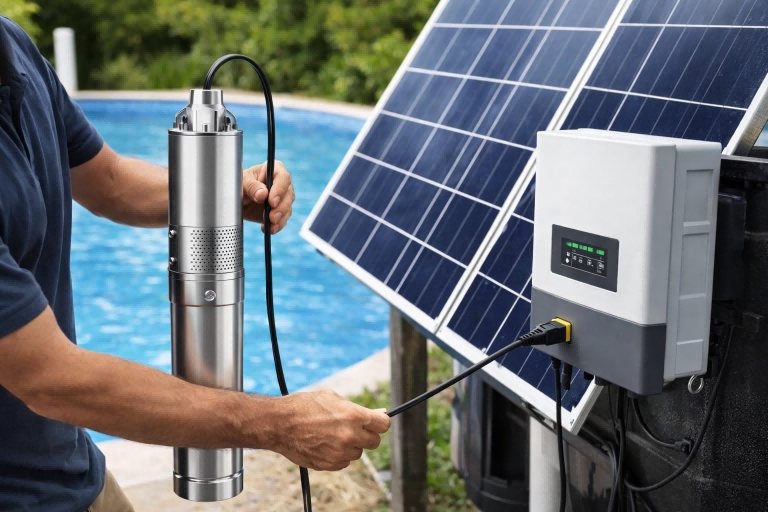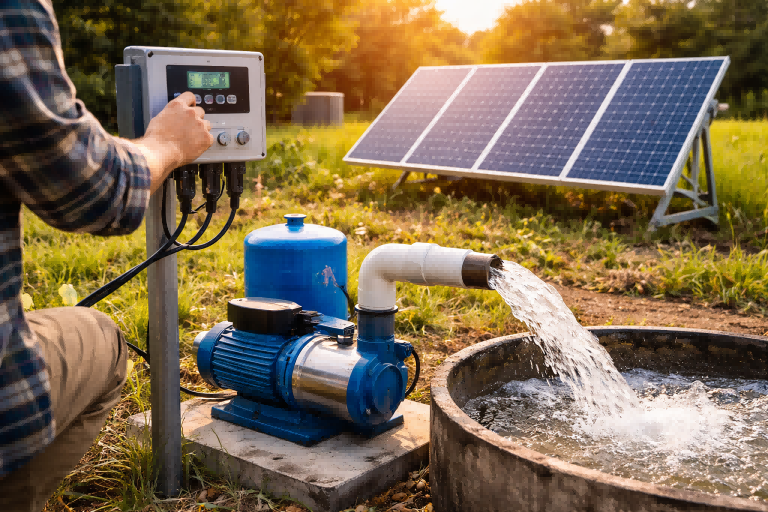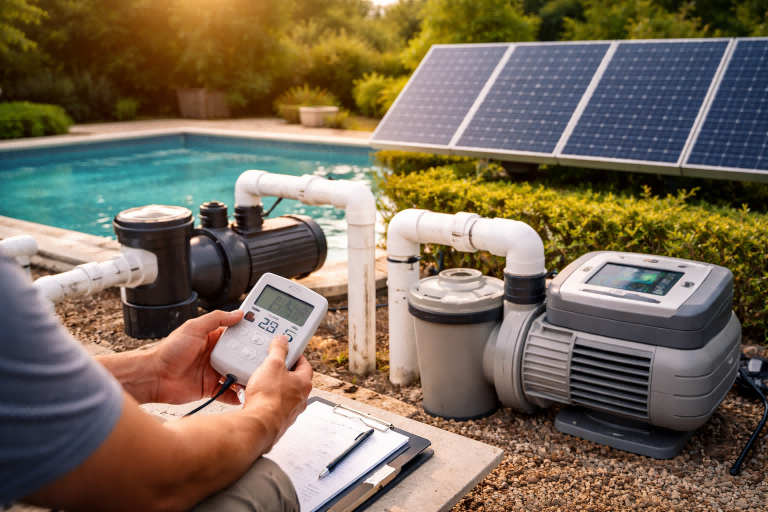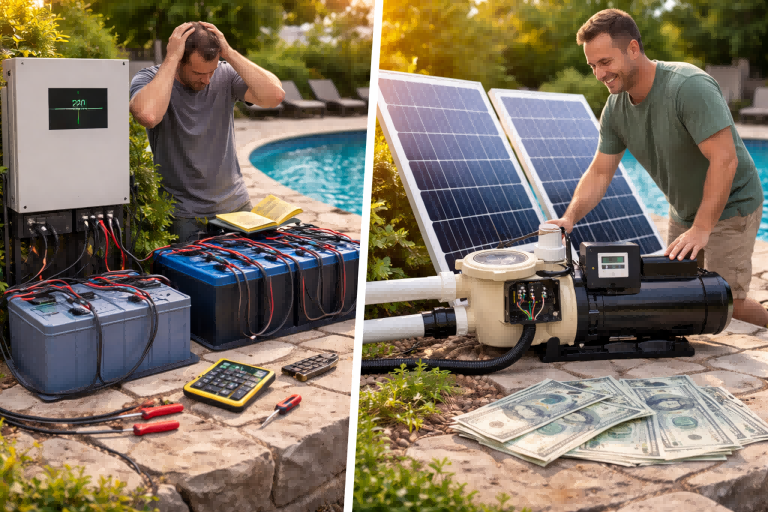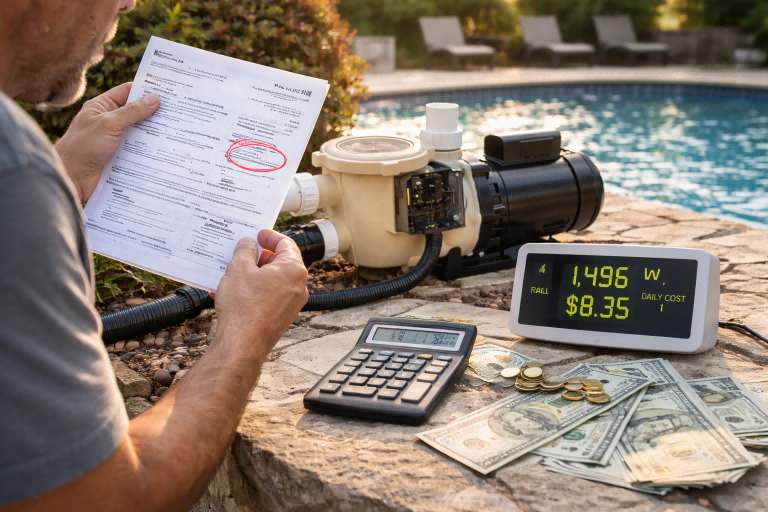Struggling with a pump that won't start?
Air in the suction line can stop it dead, causing delays and potential damage.
Choosing the right pump type is the key.
The primary difference is that a self-priming pump is designed to automatically remove air from its suction line to begin pumping fluid [^1]. In contrast, a non-self-priming pump cannot do this on its own and requires manual intervention to fill the pump and suction line with liquid before it will operate [^2].
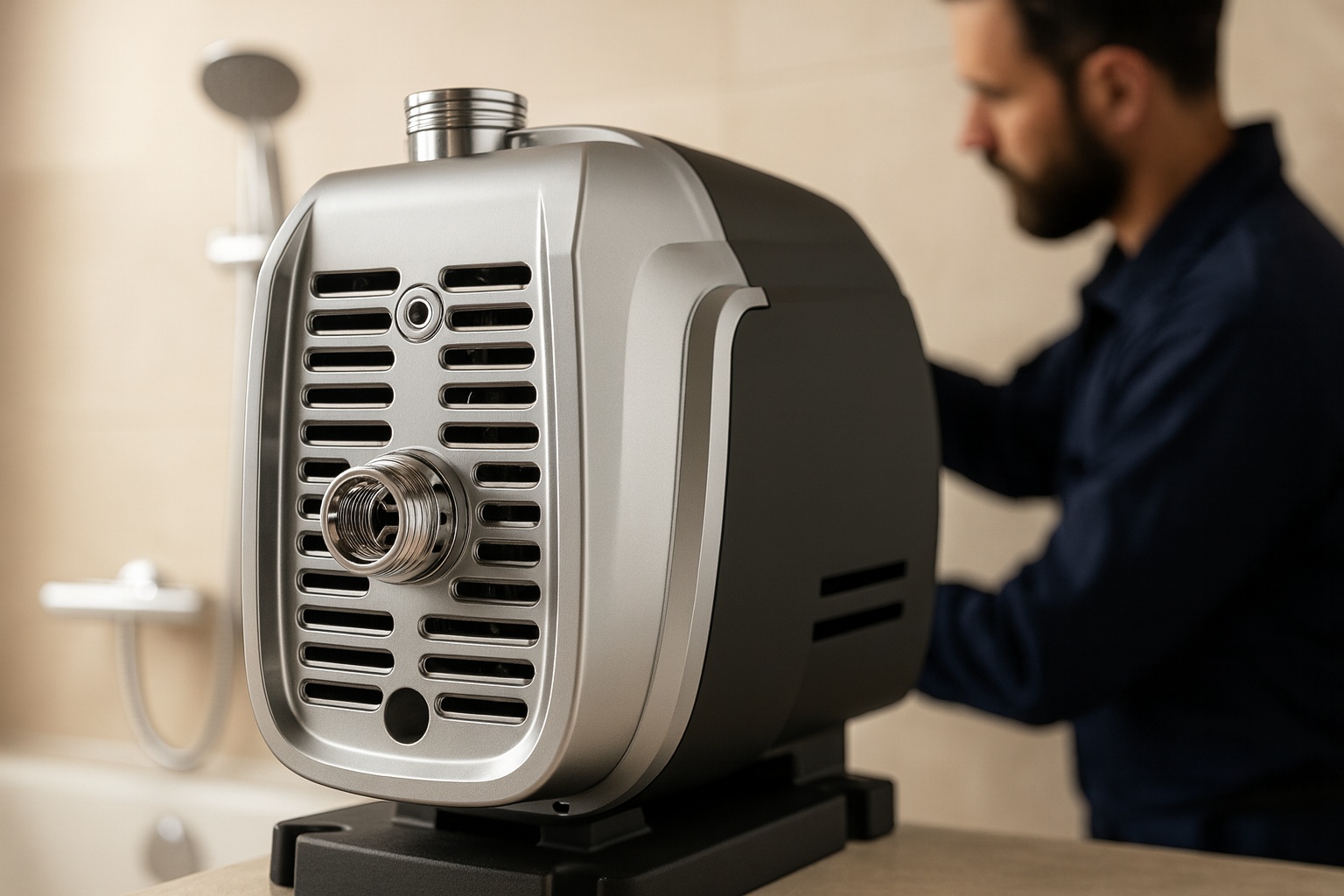
Understanding this fundamental capability is the first step in selecting a pump that will perform reliably and efficiently for your specific application.
Whether you need the convenience of automatic startup or the peak efficiency of a simpler design, the choice has significant implications for installation, maintenance, and operational costs.
Let's explore the mechanics, advantages, and ideal use cases for each type to help you make an informed decision.
What Are Self-Priming Pumps & How Do They Work?
Dealing with a pump located above your water source?
Manually priming it every time is not only time-consuming but also risks damaging the pump if air gets trapped inside.
A self-priming pump cleverly solves this by using a special casing design that holds a reserve of liquid. During startup, it mixes this liquid with the air in the suction line, creating a vacuum that automatically pulls in fluid without manual assistance [^3].
To truly grasp their value, it's essential to understand the clever engineering that makes this automatic process possible.
It's a cycle of mixing, separating, and evacuating air that continues until the pump is fully primed and ready for normal operation.
This design makes them incredibly versatile for challenging situations where other pumps would fail.
The Self-Priming Cycle Explained
The magic of a self-priming pump lies in its ability to handle both air and liquid simultaneously during the startup phase.
Unlike standard pumps that can become "air-bound" and stop working, a self-priming pump follows a distinct, repeating process to clear the air.
- Initial State: The pump's casing, which acts as a reservoir, retains a certain amount of liquid from its last operation. This liquid is essential for the process to begin [^4].
- Startup and Mixing: When the pump is turned on, the impeller begins to rotate. It churns the liquid held in the reservoir, mixing it with the air that has been drawn in from the suction line [^5].
- Air Separation: This air-liquid mixture is sent into the separation chamber or volute. Here, the velocity slows, allowing the lighter air to rise and escape through the discharge port, while the heavier, air-free liquid falls back down due to gravity [^6].
- Recirculation and Vacuum Building: The air-free liquid is then recirculated and pulled back into the impeller, where it mixes with more air from the suction line.
- Cycle Repetition: This process repeats rapidly, systematically removing air from the suction pipe and creating a growing vacuum [^7].
- Full Prime and Normal Operation: Once all the air is evacuated, the vacuum is strong enough for atmospheric pressure to push the fluid from the source up the suction line and into the pump. At this point, the pump stops priming and begins its normal pumping operation, moving a continuous stream of liquid [^8].
The Critical Role of the Casing and Reservoir
The unique physical design of a self-priming pump is what enables its special function.
The key component is its oversized casing or an integrated reservoir.
- Liquid Retention: The primary job of this reservoir is to ensure that even when the pump shuts down and the suction line drains, a sufficient quantity of priming fluid remains inside the pump body [^9].
- No Foot Valve Needed: Because the pump can re-prime itself using this retained liquid, it often eliminates the need for a foot valve at the end of the suction line. Standard pumps rely on foot valves to keep the suction line full of liquid, but these can be a source of clogs and maintenance issues [^10].
- Design Trade-offs: This larger, more complex casing design is also why self-priming pumps tend to be larger, heavier, and have a higher initial cost compared to their non-self-priming counterparts.
This intelligent design makes self-priming pumps a reliable, "set-it-and-forget-it" solution for many industrial, agricultural, and construction applications.
What is a Non-Self-Priming Pump?
Is your pump installed below the liquid source, ensuring it's always full of water?
In these situations, a standard pump can be a highly efficient and cost-effective choice, but it operates with one critical limitation.
A non-self-priming pump, the most common type being a standard centrifugal pump, lacks any internal mechanism to remove air. It must be manually primed, meaning the casing and suction line must be completely filled with liquid before it can start working [^11].
This type of pump is a workhorse in countless industries, valued for its simple design and high efficiency.
However, its reliance on external priming defines its operational limits and makes it unsuitable for certain applications.
Understanding its core mechanism and priming needs is crucial for using it effectively and avoiding common operational pitfalls.
How Standard Centrifugal Pumps Operate
The operation of a non-self-priming pump is straightforward and powerful, as long as one condition is met: it must be filled with liquid.
These pumps are designed to move liquid, not air.
- Fluid Enters: Liquid flows into the pump through the suction inlet, directly into the center, or "eye," of the impeller [^12].
- Impeller Action: As the impeller rotates at high speed, its vanes catch the liquid and accelerate it outward using centrifugal force. This imparts high velocity and kinetic energy to the fluid.
- Pressure Conversion: The fluid then enters the volute—a specially shaped casing that widens toward the discharge outlet. In the volute, the high velocity of the fluid is converted into high pressure.
- Fluid Discharges: This high-pressure fluid is then forced out of the discharge port and into the piping system.
The problem arises when air is in the casing instead of liquid.
Because air is much less dense than liquid, the impeller is unable to generate the pressure differential needed to create a vacuum and draw in more fluid.
It will simply spin in the air, a condition known as "air binding," which can quickly lead to overheating and mechanical seal damage if not corrected.
Essential Priming Requirements
To function correctly, a non-self-priming pump must be primed. This involves several common methods and components.
| Priming Method/Component | Description | Common Use Case |
|---|---|---|
| Flooded Suction | The pump is installed below the level of the liquid source. Gravity ensures the pump casing and suction line are always filled with liquid and free of air. | The most reliable setup for continuous operations, such as in building circulation systems or industrial processes where a supply tank is located above the pump. |
| Manual Filling | The user manually pours liquid into the pump casing through a priming port until the casing and the entire suction line are full. | Common in portable pump applications or where a flooded suction is not possible. It requires careful attention at every startup. |
| Foot Valve | A type of check valve installed at the end of the suction line. It allows water to be drawn in but prevents it from flowing back out when the pump is stopped, keeping the line primed. | Frequently used when the pump is located above the liquid source (suction lift) to avoid the need for manual filling at every start. |
| External Priming Systems | For very large pumps or long suction lines, auxiliary systems like vacuum pumps may be used to evacuate air from the system before the main pump is started. | Large-scale industrial or municipal applications where manual priming is impractical. |
The simplicity and high efficiency of non-self-priming pumps make them an excellent choice, but only when the application guarantees they will remain primed and ready for operation.
Key Differences: A Head-to-Head Comparison
Choosing the wrong pump can lead to wasted energy, frequent maintenance headaches, and unexpected downtime.
The differences between these two pump types directly impact their performance, cost, and suitability for your job.
Self-priming pumps prioritize operational convenience and are ideal for suction lift applications, but this comes at the cost of lower energy efficiency and a higher price. Non-self-priming pumps offer superior efficiency and a lower initial cost but require manual priming [^13].
Making the right choice requires a clear understanding of the trade-offs between automatic operation and optimal performance.
Let's break down the most critical differences to see how they stack up in the areas that matter most: priming, efficiency, maintenance, and cost.
This direct comparison will help clarify which pump's characteristics align best with your operational priorities.
Priming Process: Automatic vs. Manual
The most defining difference lies in how each pump handles air in the system.
- Self-Priming Pumps: These are engineered with built-in mechanisms to automatically purge air from the suction line. After an initial prime, they can start and restart without any external help, making them perfect for intermittent use or in systems where air entry is possible [^14].
- Non-Self-Priming Pumps: These pumps have no inherent ability to remove air. They depend entirely on external methods for priming. This can involve manually filling the casing, using priming chambers, or ensuring a gravity feed from a tank. This process requires more effort and can complicate the system's design and operation [^15].
Efficiency and Energy Consumption
Energy use is a significant factor in the total cost of ownership for any pump.
- Self-Priming Pumps: The internal recirculation and air-separation mechanisms that enable self-priming also create additional hydraulic friction and energy losses. As a result, they are typically less energy-efficient than their non-self-priming counterparts [^16].
- Non-Self-Priming Pumps: With a more direct fluid path and no energy spent on priming mechanisms, these pumps are generally more energy-efficient. Their simpler design translates into a more effective transfer of motor energy directly to the fluid, reducing operational costs over time [^17].
Maintenance and Reliability
The complexity of a pump's design often correlates with its maintenance needs.
- Self-Priming Pumps: The added components like internal valves, recirculation ports, and larger separation chambers can increase maintenance requirements. These parts are subject to wear and tear and may need periodic inspection and servicing to ensure the priming function works correctly [^18].
- Non-Self-Priming Pumps: Their simpler design, with fewer components, generally leads to lower maintenance requirements and greater reliability. There are fewer parts to fail, and maintenance tasks are typically more straightforward, making them a cost-effective choice in terms of upkeep [^19].
Cost Considerations
The initial investment and long-term costs can vary significantly between the two types.
| Cost Factor | Self-Priming Pump | Non-Self-Priming Pump |
|---|---|---|
| Initial Purchase Price | Generally higher due to more complex engineering and specialized components [^20]. | Generally lower due to a simpler design and fewer specialized parts [^21]. |
| Installation Costs | Can be simpler as they may not require foot valves or external priming equipment. | May require additional costs for priming chambers, foot valves, or vacuum systems if not in a flooded suction setup. |
| Operational Costs | Higher energy consumption can lead to increased electricity bills over the pump's lifespan. | Lower energy consumption results in more cost-effective operation over time. |
| Maintenance Costs | Potentially higher due to the complexity of the priming mechanism. | Typically lower because of the simpler, more robust design. |
Ultimately, the choice involves balancing the upfront cost and convenience of a self-priming pump against the long-term efficiency and simplicity of a non-self-priming model.
Applications: When to Choose Which Pump
Your specific application has unique demands, from the type of fluid being moved to the physical layout of the system.
Applying the wrong pump can lead to inefficient operation, frequent failures, and costly disruptions.
Choose a self-priming pump for applications involving a suction lift, intermittent operation, or fluids with entrained air, such as dewatering or sump emptying. Opt for a non-self-priming pump for continuous operations with a flooded suction, where energy efficiency is the top priority [^22].
The decision hinges on a practical assessment of your operational conditions.
You must consider factors like the pump's position relative to the fluid source, the nature of the fluid itself, and whether the pumping operation will be continuous or sporadic.
Let's look at specific scenarios to make the choice clear.
You Should Choose a Self-Priming Pump When...
The advantages of a self-priming pump shine in applications where manual priming is impractical, inconvenient, or impossible.
1. The Pump is Above the Fluid Source (Suction Lift)
This is the classic scenario for a self-priming pump.
If you need to lift fluid from an underground tank, a sump pit, or a tanker truck, a self-priming pump can evacuate the air from the suction line and lift the fluid without needing a submerged foot valve [^23].
- Examples: Dewatering construction sites, emptying septic tanks, transferring fuel from underground storage.
2. The Operation is Frequent or Intermittent
Pumps used for tasks that start and stop often benefit greatly from self-priming capability.
It eliminates the need for an operator to manually re-prime the pump for each cycle, saving significant time and labor.
- Examples: Irrigation systems that run on a schedule, sump pumps that activate when water levels rise, industrial processes with repetitive batch transfers.
3. Air or Entrained Gases are in the Fluid
Self-priming pumps are designed to handle mixtures of air and liquid.
This makes them superior for applications where air can enter the suction line or where the fluid itself contains gases.
- Examples: Pumping frothy liquids, wastewater treatment (where gasses are common), stripping tankers or storage tanks completely empty.
4. The Fluid Contains Solids or Slurries
Many self-priming pumps are designed as solids-handling or "trash" pumps.
They can be equipped with open impellers that pass large solids without clogging, making them indispensable in challenging environments [^24].
- Examples: Pumping sewage, managing industrial wastewater, transferring slurries in mining operations.
You Should Choose a Non-Self-Priming Pump When...
A non-self-priming pump is the right choice when conditions are stable and energy efficiency is a primary concern.
1. You Have a Flooded Suction
If your pump is installed below the liquid level of the supply tank, gravity will keep the pump constantly primed.
In this ideal setup, the self-priming feature is unnecessary, and a more efficient non-self-priming pump is the better choice.
- Examples: Water circulation in HVAC systems, pressure boosting from city water mains, process pumping from an elevated supply tank.
2. Energy Efficiency is a Top Priority
For applications that run continuously, 24/7, the higher efficiency of a non-self-priming pump can lead to substantial energy savings over its lifetime.
Their simpler hydraulic design minimizes energy losses.
- Examples: Power plant cooling water circulation, large-scale water treatment and distribution, continuous chemical processing.
3. The Application Requires Precise Control
In some critical processes, operators prefer to have precise control over the priming process to ensure the system is completely free of air before startup.
Non-self-priming pumps allow for this certainty.
- Examples: High-pressure boiler feed systems, applications where cavitation must be strictly avoided.
4. Budget Constraints are a Major Factor
Given their simpler design, non-self-priming pumps typically have a lower initial purchase price, making them an attractive option when the budget is a primary consideration and the application conditions are suitable.
- Examples: Basic water transfer, agricultural irrigation from a pond with a foot valve, simple domestic pressure boosting systems.
Conclusion
The choice is clear.
Self-priming pumps offer convenience for difficult suction conditions, while non-self-priming pumps provide superior efficiency for simple, continuous-flow applications.
Match the pump to your specific operational needs.
FAQ
1. Do self-priming pumps need to be primed initially?
Yes, a self-priming pump must be filled with liquid once before its first use. After that, its design allows it to retain enough liquid to re-prime itself automatically for subsequent starts.
2. Are self-priming pumps less efficient?
Yes, generally. The internal mechanisms used to recirculate fluid and separate air create hydraulic losses, making them slightly less energy-efficient than standard non-self-priming pumps of the same size.
3. What happens if a non-self-priming pump runs dry?
Running a non-self-priming pump dry can cause it to overheat rapidly. This can damage the mechanical seal and potentially the motor, leading to costly repairs and pump failure.
4. Do self-priming pumps need a foot valve?
Usually, no. One of the main advantages of a self-priming pump is its ability to operate without a foot valve, which can be a common source of clogging and maintenance issues.
5. How long does it take a self-priming pump to prime?
The priming time depends on the size of the pump, the motor speed, and the length and diameter of the suction line. It can range from under a minute to several minutes.
6. Can a standard centrifugal pump be made self-priming?
Yes, a standard pump can be made to act as self-priming by installing a check valve or foot valve on the suction line and ensuring the casing is filled with water on startup.
7. What is "suction lift" for a pump?
Suction lift is the vertical distance from the surface of the liquid source to the centerline of the pump inlet when the pump is located above the liquid.
8. Can self-priming pumps handle solids?
Many are specifically designed to. Self-priming "trash pumps" use open impellers to effectively pass solids, slurries, and debris, making them ideal for wastewater and construction dewatering.


